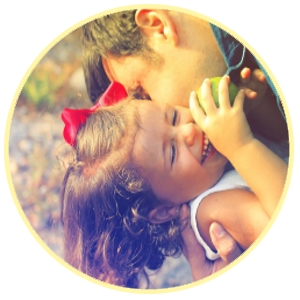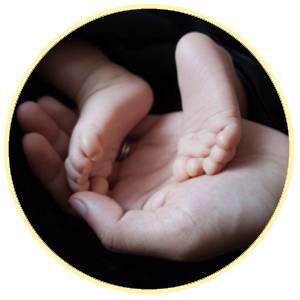Babies and children learn and discover the world through their senses.

Sensory development starts in the womb and develops throughout childhood, and into adulthood. It is important for overall health and well-being and forms the foundation of a child’s learning.
We have eight senses that tell us about ourselves and the world around us.
Touch, smell, hearing, taste and vision and then some others you may be less familiar with, known as vestibular (sense of movement and helps us balance), proprioception (tells us about our movements and where the body is in space) and interoception (the internal sense i.e. hunger, hot/cold, pain).
We all have likes and dislikes and form individualised sensory preferences.
Babies can already recognise their parents’ voices, mothers’ rhythms and smells when they are born.
They learn these from within the safety of the womb.
From birth babies start reacting to the sensory stimulation. They turn their head towards sound, follow objects with their eyes and discover their hands and feet by touching them.
Later they start to develop eye-hand coordination and will use their hands to reach and touch something they see. They then begin eye-hand-mouth exploration by putting things into their mouths, which stimulates the sense of taste.
It is through sensation that they learn about movement, play, connection, sharing, love and learning.
Infants use their senses both to familiarise themselves with the environment and to achieve comfort, and every baby/infant goes about this differently.
The Play @ Home baby and toddler booklets provided by your health visitor have some great age appropriate activities to encourage sensory development. Below are some more suggestions for sensory exploration.
Touch
Which tactile experiences are calming/soothing?
- Skin to skin
- Gentle Massage
- Toys of different textures i.e. soft/hard, rough/smooth
- Exploratory play i.e. water play, bubbles, shaving foam, jelly
Vision
Create opportunity and experience
- Simple patterns of black and white
- Eye contact, smiles
- Vary positioning i.e. forward facing in carrier, tummy time, lying on their back
- Peek a boo and face mirroring
- Pointing out day to day objects
- Picture books
Hearing
Create opportunity and experience
- Coo talking, smiling, singing songs, playing music
- Squeaky toys, musical toys, noisy toys
- Cause and effect play
- Story telling
Vestibular
- Vary positioning – rocking, swaying, dancing
- Maintain a safe environment for movement, minimising the risk of bumps
- Lift up/down, slow rhythmical movement and rocking
- Encourage climbing, jumping, slides, going up/down stairs but staying close to ensure safety
Taste
(when age appropriate)
- Introduce new foods
- Introduce and expand textures and flavours
Movement
Notice reactions and preferences, are they calming or alerting?
Smell
Notice reactions and preferences
- The smell of breastmilk and a parents scent can be calming
- Introduce new smells
Interoception
- Respond to their crying by satisfying hunger with feeding,
- Respond to their potential pain or discomfort i.e. teethers, winding, supporting sleep with cuddles, warmth and changing dirty nappies in a timely manner
- Consistent routines help with predictability
- Reduce environmental demands when distressed i.e. noise and lighting
Proprioception
(when age appropriate)
- Move the babies arms and legs together and in large movements
- Action songs i.e. Head, shoulders, knees and toes and Simon says
- Push/pull toys
- Obstacle course – over, under and through















